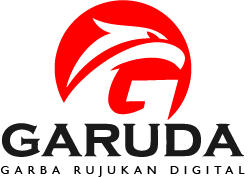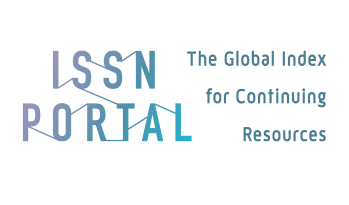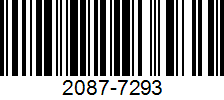Submissions
Submission Preparation Checklist
As part of the submission process, authors are required to check off their submission's compliance with all of the following items, and submissions may be returned to authors that do not adhere to these guidelines.Author Guidelines
Format
- The writing systematics at least includes Introduction, Literature Review and Hypothesis Development (for qualitative research only literature review), Research Method, Results and Analysis, Conclusion, and Bibliography. Acknowledgements/Acknowledgements (if any) are placed after the Conclusion and before the Bibliography.
- The article is typed in 12-point font with a line spacing of two on A4 paper, except for direct quotations which are typed with a line spacing of one and with an indented style.
- The top, bottom, left and right margins are at least 2.5 cm.
- The article is written as efficiently as possible according to needs, with an article length ranging from 25-30 pages.
- All pages, including references and appendices must be numbered sequentially.
Article Writing Systematics
Abstract
The abstract consists of 100-200 words in English and Indonesian. The abstract provides a summary of the article's objectives, methods, and conclusions. The abstract is followed by keywords consisting of 3-5 words to facilitate the compilation of the article index.
Introduction
This section contains the background of the research, research objectives, and research contributions.
Literature Review and Hypothesis Development
This section contains previous literature related to the research and hypothesis development.
Research Methods
This section contains the research design or research design, research objectives and targets (population and sample), data collection techniques, research models, and analysis techniques.
Research Results and Discussion
This section contains the results of data analysis, hypothesis testing, answering research questions, findings and interpreting findings.
Conclusion
Presents research conclusions, research limitations, and suggestions for further research.
Bibliography
Contains sources referred to in writing the article.
Tables and Figures (Graphs)
- Tables and figures are presented as efficiently as possible (only those that present results) and included in the manuscript. Tables and figures presented in the appendix are those that show the data processing process.
- Tables and figures are numbered sequentially and have a complete title that shows the contents of the table or figure.
- References to tables or figures must be given in the manuscript.
- The author mentions in the manuscript where the table or figure is included.
- Tables or figures should be interpretable without having to refer to the manuscript.
- Sources of Tables and Figures must be included.
- Figures must be prepared in a printable form.
Citations
In-text citations are written between opening and closing brackets stating the author's last name, year without commas, and page number if deemed necessary.
- One citation source with one author: (Syafruddin 2001); with two authors: (Habbe and Hartono 2000); more than three authors: (Budiono et al. 1999); more than one citation source with different authors: (Mardiyah 2001; Kusumawati 1999); more than one citation source with the same author: (Djakman 1998, 2000).
- If the citation is accompanied by a page number: (Brownell 1981, 845).
- If the reference contains an author with more than one article in the same year, then in the citation use the letters a, b, after the year. Example: (Joni 1999a, 1999b) or (Joni 1999a, Daud 2000b).
- If the author's name is mentioned in the text, then the name does not need to be mentioned in the citation. Example: Alamsyah (1998) stated ...
- A citation source that comes from the work of an institution should mention the acronym of the institution concerned, for example, (IAI 1994).
Reference
Each article must contain a bibliography (only those that are the sources of the quotation) arranged alphabetically according to the author's last name or institution name. Example:
Book
One Author
Hair, J.F., Hult, G.T., Ringle, C.M., & Sarstedt, M. (2014). A primer on partial least squares structural equation modeling (PLS-SEM). Los Angeles: SAGE Publications.
Notoadmodjo, S. (2016). Promosi Kesehatan Dan Ilmu Perilaku. Jakarta: Rineka Cipta.
Two to 4 Writers
Cooper, D. R. and P. S. Schindler. 2001. Business Research Method. New York: Mc Graw Hill.
Guan, L., D. R. Hansen, and M. M. Mowen. 2009. Cost Management. Mason: South Western.
More than 4 Authors
Booth, W. C. et al. 1995. The Craft of Research. Chicago: University of Chicago Press.
Institutional Writer
Departemen Kesehatan RI. (2016). Pedoman Makanan Pendamping ASI. Jakarta: Universitas Indonesia.
Jurnal
Leonardi, P.M., Huysman, M., & Steinfield, C. (2013). Enterprise social media: Definition, history, and prospects for the study of social technologies in organizations. Journal of Computer-Mediated Communication, 19 (1), 1-19.
Website
Anonim. Trauma deteksi dini penanganan awal: http://safwankita.wordpress.com. Diakses dari www.google.com. Pada tanggal 10 Maret 2017. Jam 23.30 WIB.
Chris ajila. (2015). Influence of rewards on workers performance in an organization: http://puslit.petra.ac.id/journals/management.pdf. Diakses dari www.yahoo.com. Pada tanggal 21 April 2017. Jam 21.00 WIB.
Departemen Komunikasi Bank Indonesia. (2017). Laporan tahunan Bank Indonesia tahun 2016. Diakses dari Bank Indonesia: http://www.bi.go.id/id/publikasi/laporan- tahunan/bi/pages/LKTBI-2016.aspx. Pada tanggal 24 April 2017. Jam 11.00 WIB.
Workshop/Seminar
Abbott, K. and J. Seymour. 1997. Trapping The Papaya Fruit Fly in North Queensland. Paper presented at the Australian Entomological Society Conference, Melbourne.
Fitriany dan D. Sari. 2008. Studi atas Pelaksanaan PBL dan Hubungannya dengan Prestasi Mahasiswa. Paper dipresentasikan pada acara Simposium Nasional XI, Pontianak.
Thesis/Dissertation/Working Paper
Celik, C. (2016). Relationship of organizational commitment and job satisfaction : A Field Study Of Tax Office Employees (Tesis). Program Study Magister. Mersin Turki University, Turki
Utama, S. 1996. The Association between Institutional Ownership and Trading Volume Reaction to Annual Earnings Announcements. Ph.D Dissertation, Texas A&M University.
Chambers, D. J. 2003. Earnings Persistence and Accrual Anomaly. Working Paper, University of Illinois at Urbana-Champaign.
Chan, K., L. Chan, N. Jegadeesh, and J. Lakonishok. 2004. Earnings Quality and Stock Returns. Working Paper, University of Illinois at Urbana-Champaign.
Footnotes
Footnotes are used only to provide additional explanations/analyses, which if combined into the manuscript will disrupt the continuity of the manuscript. Thus, footnotes are not used for references. Footnotes must be numbered sequentially printed in superscript. The text of the footnote is placed directly on the page containing the superscript number.
Plagiarism Policy
Every author who submits an article to Zona Kebidanan must make a statement that the manuscript is free from plagiarism and is not being considered and published in another journal.
Reproduction Policy
Articles that have been published in Zona Kebidanan become the copyright of LPPM Universitas Batam. For educational purposes, the contents of the Computer can be copied or reproduced as long as the source of the article is mentioned. A written request must be submitted to the Editor to obtain permission to reproduce the contents of Zona Kebidanan for purposes other than educational purposes.
Data Availability Policy
Consistent with the objectives of Zona Kebidanan, article authors are expected to provide the data they have to those who need it and provide information on how to obtain the data. If the article uses a survey or experimental approach, then all instruments (questionnaires, cases, interview plans, etc.) must be attached.
Article Submission
Articles are sent in softcopy (without author identity) and are equipped with a short CV of the author and research instruments (questionnaires, interview results, etc.). Articles are sent through the Zona Kebidanan website by selecting the Submit Paper menu and will be processed using the Open Journal System (OJS) application. Instructions for using OJS for authors can be seen in the OJS Guidelines menu.
Copyright Notice
Manuscripts submitted by authors must be works that do not violate existing copyrights. Manuscripts submitted must be unpublished and not sent at the same time to other publishers. Copyright for all materials including printed, electronic and other forms is held by Zona Kebidanan. After the manuscript has gone through the process of editing substance and is positively accepted, the author sends the Copyright Statement file to the Zona Kebidanan editorial address.















